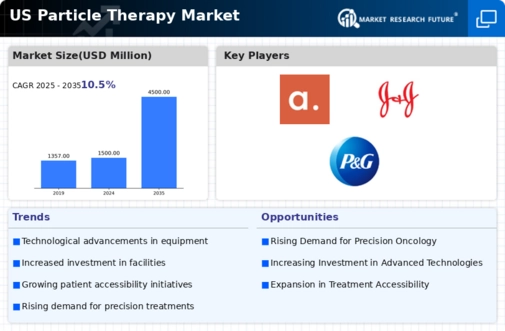US Particle Therapy Market Summary
The US Particle Therapy market is projected to grow from 1500 USD Million in 2024 to 4500 USD Million by 2035, reflecting a robust CAGR of 10.5%.
Key Market Trends & Highlights
US Particle Therapy Key Trends and Highlights
- The market valuation is expected to reach 4500 USD Million by 2035, indicating substantial growth potential.
- From 2025 to 2035, the market is anticipated to expand at a CAGR of 10.5%, showcasing a strong upward trajectory.
- The current market size stands at 1500 USD Million in 2024, laying a solid foundation for future growth.
- Growing adoption of advanced particle therapy technologies due to increasing cancer prevalence is a major market driver.
Market Size & Forecast
| 2024 Market Size | 1500 (USD Million) |
| 2035 Market Size | 4500 (USD Million) |
| CAGR (2025 - 2035) | 10.5% |
Major Players
Apple Inc (US), Microsoft Corp (US), Amazon.com Inc (US), Alphabet Inc (US), Berkshire Hathaway Inc (US), Meta Platforms Inc (US), Tesla Inc (US), Johnson & Johnson (US), Visa Inc (US), Procter & Gamble Co (US)














Leave a Comment